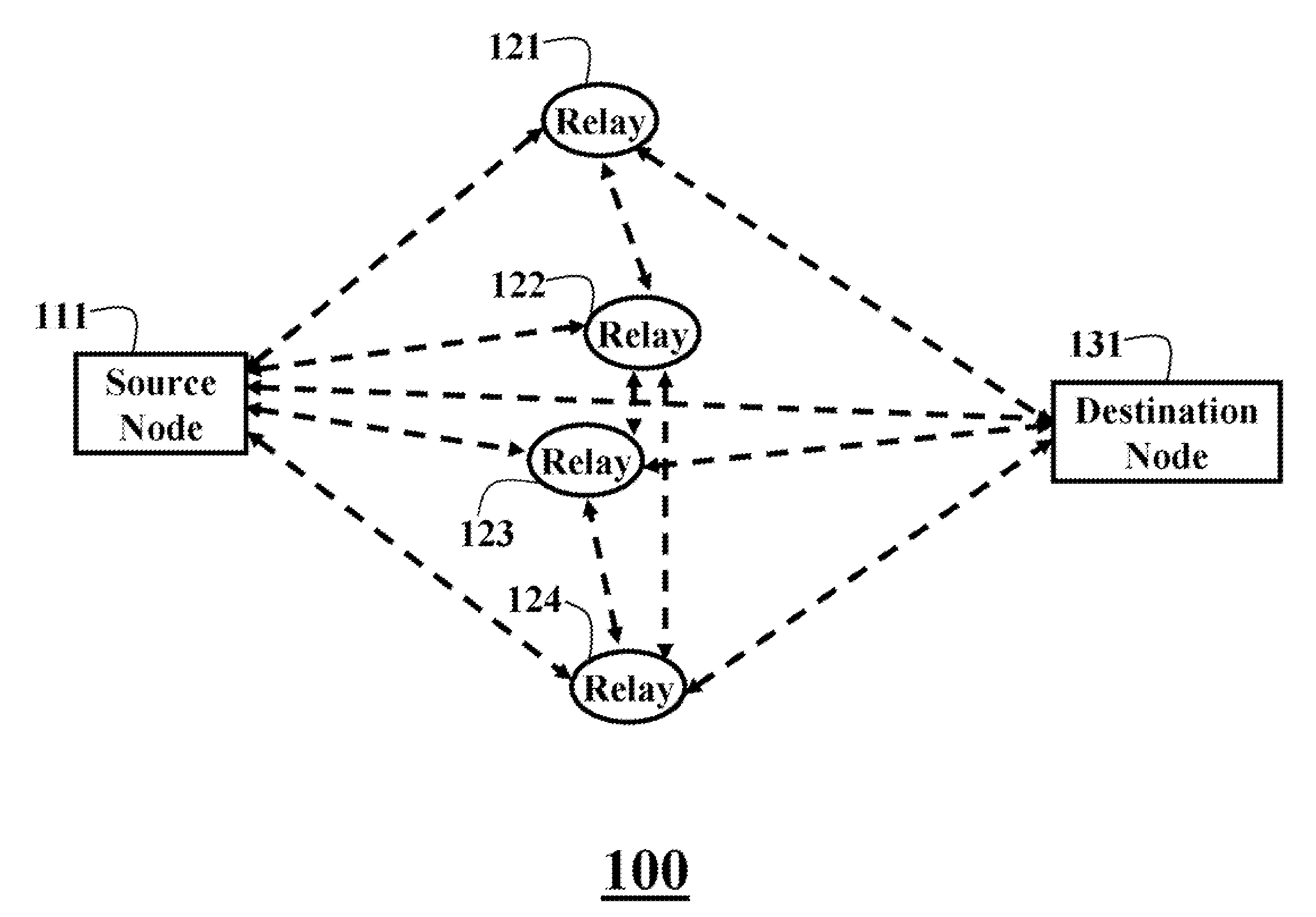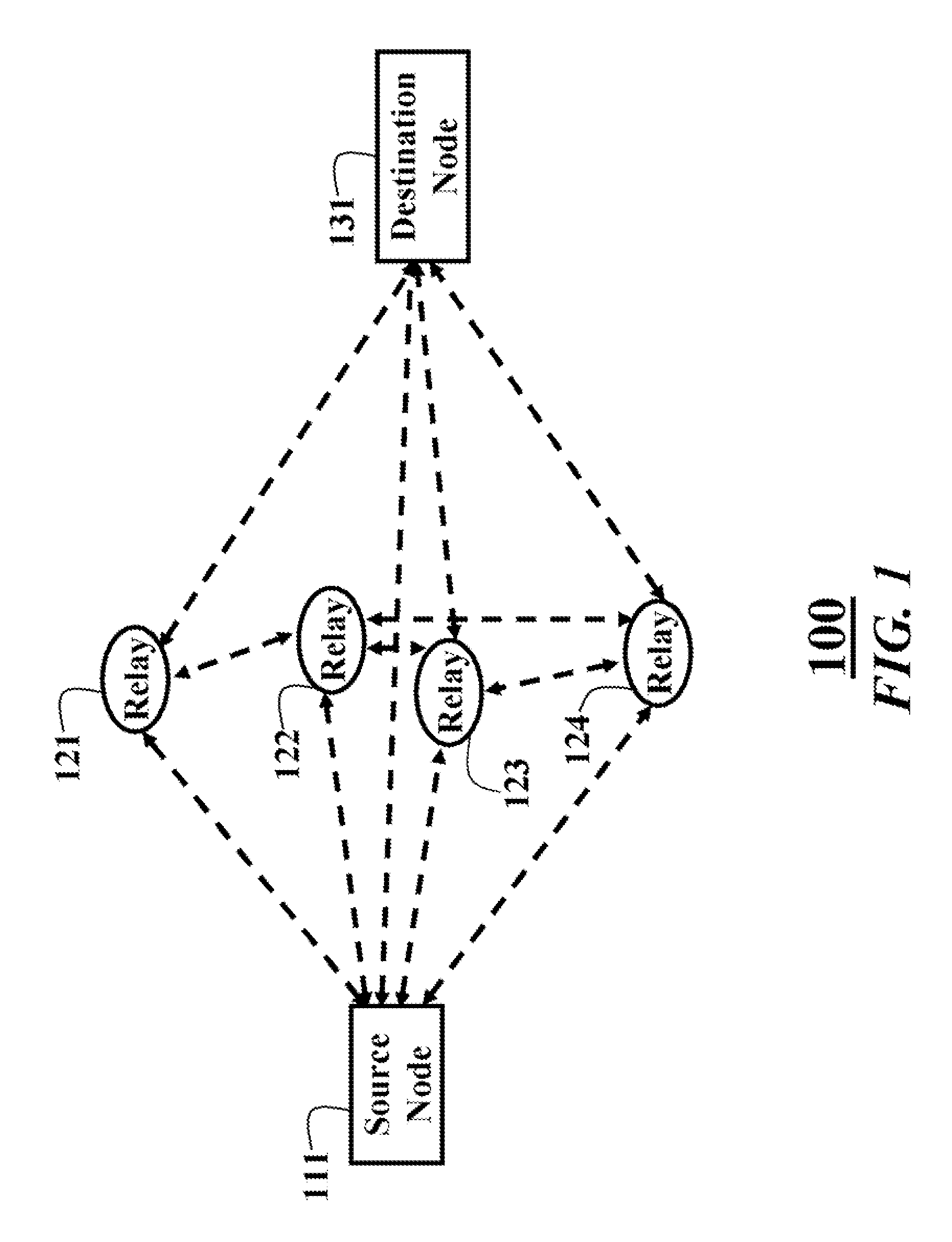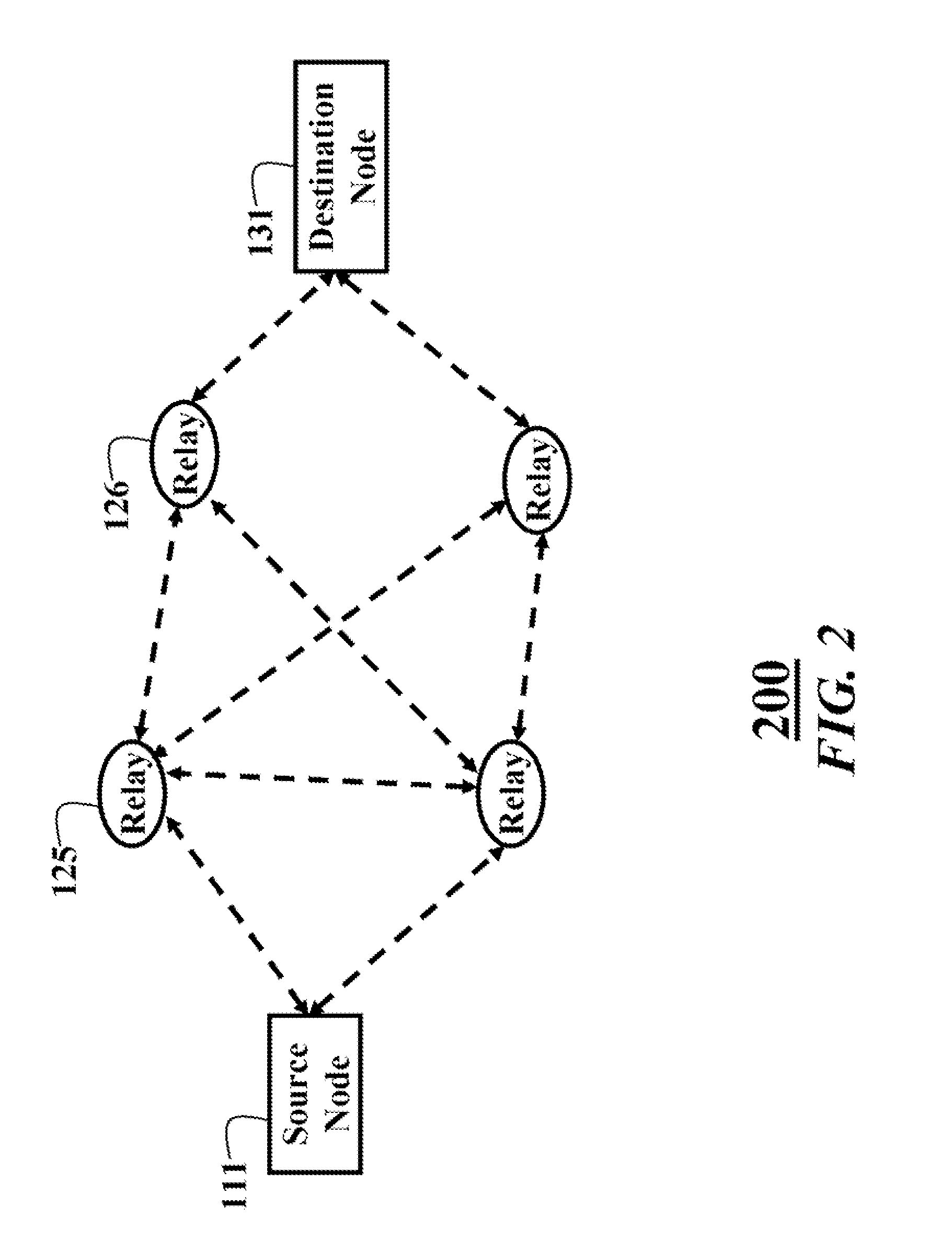Cooperative Routing in Wireless Networks using Mutual-Information Accumulation
a wireless network and mutual information technology, applied in data switching networks, site diversity, frequency-division multiplexes, etc., can solve the problems of non-optimal codes and other problems, and achieve the effect of reducing delay and energy usag
- Summary
- Abstract
- Description
- Claims
- Application Information
AI Technical Summary
Benefits of technology
Problems solved by technology
Method used
Image
Examples
Embodiment Construction
[0025]FIGS. 1 and 2 show cooperative relay networks 100 and 200 according to embodiments of our invention. The cooperative relay network 100 includes a source node 111, a set of N relay nodes 121-124, and a destination node 131, i.e., source, relays, and destination, respectively.
[0026]It should also be understood, that the embodiments of the invention can also by used with multiple relay ‘hops’ as shown in FIG. 2. In this case, relay 125 also acts as a ‘source’ for an ‘intermediate’ relay 126. This scheme can be extended to additional hops. It should be understood, that a practical network, such as a network of sensors in a large manufacturing plant, refinery or office building can include tens or perhaps hundreds of nodes, which makes the optimal route determination non-trivial. Particularly, brute force numerical approaches or iterative searches, as known in the art, become impractical.
[0027]It is desired to optimize resources, e.g., delay, energy or the product of time and bandw...
PUM
 Login to View More
Login to View More Abstract
Description
Claims
Application Information
 Login to View More
Login to View More - R&D
- Intellectual Property
- Life Sciences
- Materials
- Tech Scout
- Unparalleled Data Quality
- Higher Quality Content
- 60% Fewer Hallucinations
Browse by: Latest US Patents, China's latest patents, Technical Efficacy Thesaurus, Application Domain, Technology Topic, Popular Technical Reports.
© 2025 PatSnap. All rights reserved.Legal|Privacy policy|Modern Slavery Act Transparency Statement|Sitemap|About US| Contact US: help@patsnap.com



